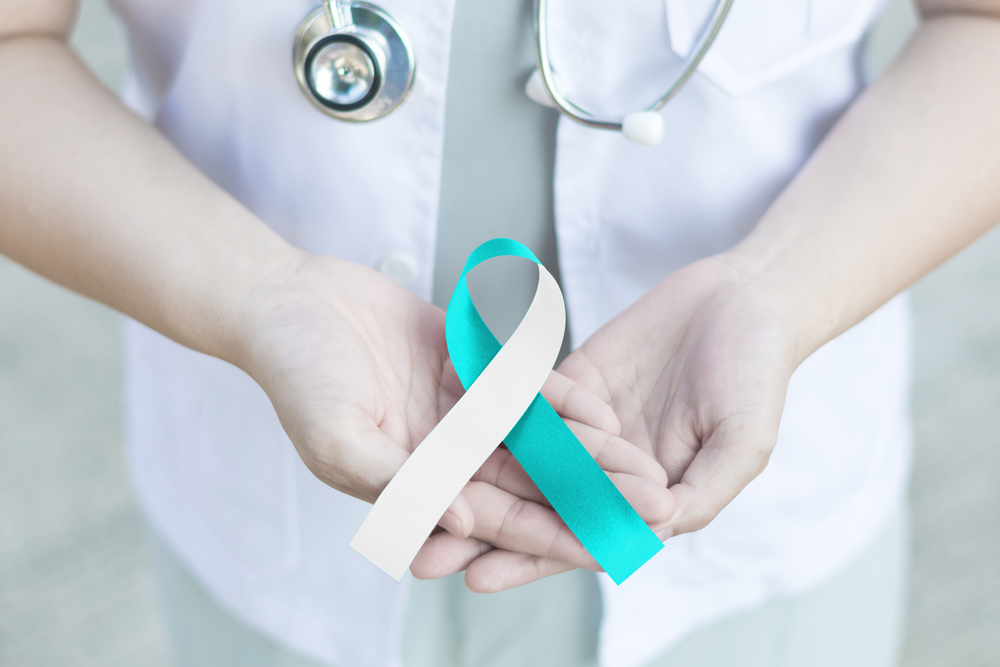According to Medical Daily, 30 years ago cervical cancer was among the leading cancer killers among women. But if there’s good news to be had, it’s that the death rate from cervical cancer has dropped more than 50-percent since, and is now considered “one of the most preventable types of cancer,” notes the source.
Like other health issues, knowledge is the key to dealing with it (along with a knowledgeable medical team). Medical Daily notes there are guidelines for cervical cancer screening, but they’re constantly being updated as new information comes to light. Here’s everything to know about cervical cancer…
There’s a Main Cause
Not all cancers have causes that can be traced so definitively, but in the case of cervical cancer, human papillomavirus (HPV) is usually the culprit, notes WebMD. The source stresses there are many forms of HPV virus, and not all of them can lead to cancer.
HPV is spread through intimate contact, it adds. In some cases, there may be genital warts, and in some cases no symptoms at all. In fact, “Most adults have been infected with HPV at some time,” explains the site. This is why it’s important to follow regular screening schedules to catch any signs early – there’s a pap test to detect any cell mutations, and an HPV test that looks for the virus as a root cause of cell changes.
There’s a Vaccine to Reduce Risk
There’s a vaccine to prevent the HPV virus that can lead to cancer. While recommended cervical cancer screening doesn’t begin until 21, notes the Centers for Disease Control and Prevention (CDC), the vaccine can be administered at a much earlier age, it adds.
The current schedule for the HPV vaccine, Gardasil is age 9 – 14, two shots 6 to 12 months apart; over age 15, 3 shots over 6 months. If you didn’t receive the vaccine as a child, it’s not too late. It is now available for women up to the age of 45. The vaccine should be given to males and females (starting at the same age), as males can develop potentially serious symptoms as well.
It’s Among the Most Preventable Cancers
Staying on the same line of thought about prevention, the National Cervical Cancer Coalition (NCCC) says that while more than 12,000-women in the U.S. will be diagnosed with cervical cancer each year (and 4,000-will die), it’s also one of the most preventable forms of cancer.
Thanks to screening tests that allow for earlier detection and treatment, the death rate from cervical cancer in the U.S. drops by about 2-percent each year, adds the source. “Most women who have abnormal cervical cell changes that progress to cervical cancer have never had a Pap test or have not had one in the previous three to five years,” it explains.
Symptoms May Not Appear Til Late
Another argument for regular screening for cervical cancer is that you may not know you have it until it reaches its advanced stages. Healthline notes that the symptoms can also often be confused for menstrual irregularities (which is one of the signs).
The source lists symptoms as bleeding between periods, after intercourse, or after a pelvic exam. Other symptoms include discharge that’s unusual in color or scent, or even more frequent need for urination (with pain sometimes associated). Pelvic region pain is also a telltale sign to see a doctor, it adds.
There are Five Stages
As mentioned earlier, symptoms don’t usually present themselves until later stages. MedicineNet.com says there are actually 5-stages of cervical cancer (from 0 to IV), and explains each stage in more detail.
The source explains that stage 0 is not considered “a true invasive cancer,” but there’s a small tumor present by Stage I. By Stage II the cancer has spread beyond the cervix, but does “not invade the pelvic walls or the lower part of the vagina,” it adds. By Stage III, the tumor can start blocking ureters from the kidneys to the bladder, and by Stage IV, it has spread beyond that into the bladder or rectum or even to other parts of the body, it adds.
There are Four Standard Treatments
The National Cancer Institute explains there are 4-standard treatments for cervical cancer, including surgery (including a hysterectomy), radiation therapy, chemotherapy, and “targeted therapy,” which uses drugs or other medical methods to attack cancer cells while leaving healthy cells untouched.
Meanwhile, the source points patients towards information about clinical trials for new treatments, noting taking part in one may be beneficial for some. You can enter a clinical trial before, during or following cancer treatments, it adds. Cancer treatments can have side effects, and follow-up tests may also be needed to gauge the effectiveness of a treatment, and to decide whether to stop or change the approach, it adds.









